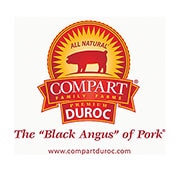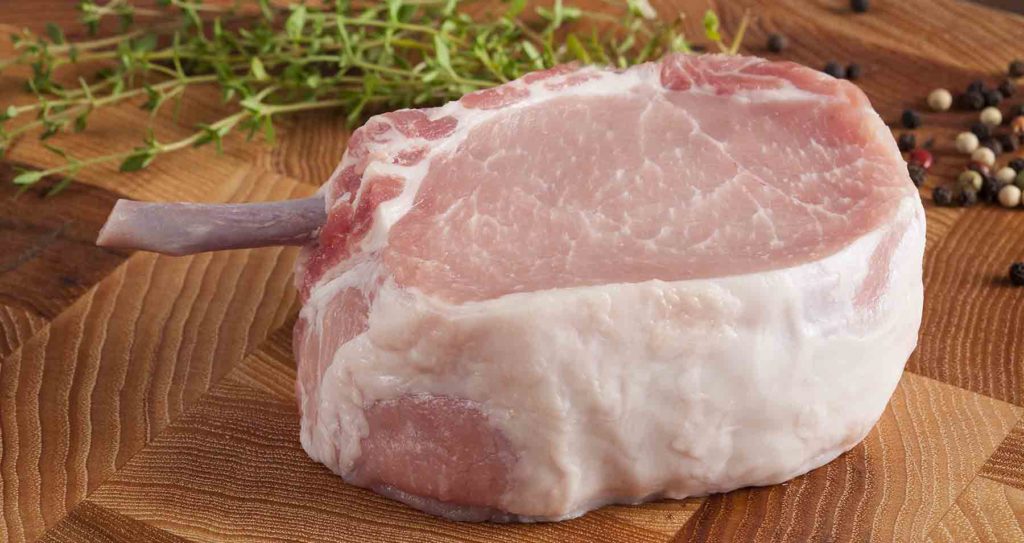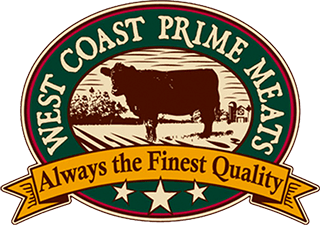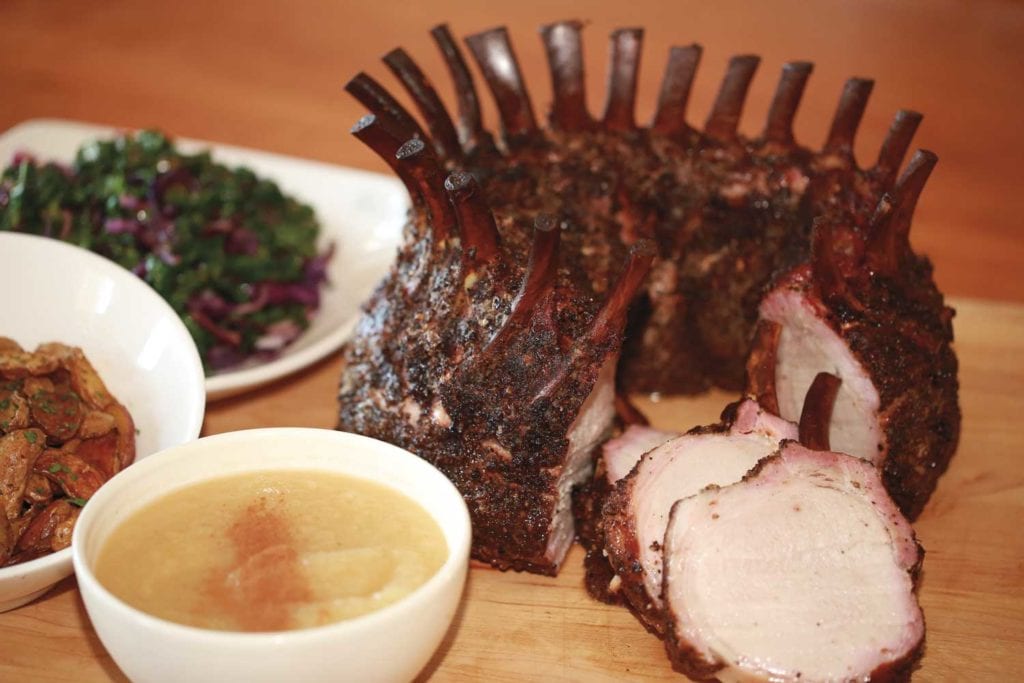Compart Duroc


Serious beef lovers know that the richest-flavored steaks on the menu are the ones that have been dry-aged. For pork fans, that has not been an option for many years. American pork was simply too lean for the aging room.
Those pork devotees have a champion in Compart Family Farms, whose carefully bred and lovingly tended hogs now produce meat that can be dry-aged. That’s just one of the great innovations Compart has brought to the dinner table.
“In the 1980s and 1990s, the whole ‘other white meat’ campaign caused the problem,” company spokesman Steve Mulryan says. “We call it ‘the other dry meat’ campaign,” he jokes. But the damage that program did to the pork industry was no joke, he admits. Pork, which once was America’s favorite meat, took a slide when it lost its fat and consequently diminished in flavor. When people eat Compart Duroc pork, “they say, this is how pork used to taste,” Mulryan claims.
Or, as the titular spider in Charlotte’s Web might declare, “some pig!”
The Compart family, based in Minnesota, has bred hogs and farmed for four generations, beginning with Jim Compart’s grandfather, Ottomar Compart. They are known for Durocs, a heritage breed that the National Swine Registry dubs “the sire of choice for the American farmer.”
Durocs have always had a reputation for growth and meat quality, but have slightly more fat than the lean commercial lines, so they used to command less money from the packers, third-generation family member Jim Compart recalls. But, he adds, those leaner hogs lacked the higher quality, brighter red pork meat and consistent marbling of Compart Durocs that consumers favor today.
Had the Comparts continued just to breed hogs, the pork market today might be stuck in a rut. But around 2002, Jim Compart focused on selling the family hogs for meat as well as for breeding stock. To educate consumers and increase demand for their products, he labeled their pork offerings along the lines of beef cuts, promoting pork porterhouses and ribeyes. The idea has caught the imagination of restaurant chefs, who feature cuts like pork porterhouses with increasing frequency on menus.
As Duroc demand grew, the challenge for the family was to increase production. Duroc sows typically have eight pigs per litter. To boost that, the Comparts developed a prolific Yorkshire and Landrace female line to crossbreed and produce up to 12 piglets per litter. “We’re getting double the pigs and they grow more efficiently,” Mulryan confirms.
To ensure quality, the Compart family tapped ultrasound technology, allowing them to select and breed their Duroc lines for added marbling. A specialized feeding program that fortifies the hogs with vitamins and trace minerals also boosts their products’ meat quality and shelf life, Compart asserts.
In the past decade, the demand for Compart Duroc has grown to the point that the family outsourced a team of hog farmers to produce their top-tier pork. Unlike other cuts of meat, pork does not participate in the USDA grading program. The farmers, instead, must monitor themselves. For those who work with Compart, Mulryan suggests, “the farmers are happy, because they are growing a premium product, not a commodity pig.”
One of the best ways to taste the superiority of Compart Duroc is in a crown roast, a ring of pork chops created from two whole racks of pork, trimmed down to the loin. Las Vegas grill master and Table 34 chef/owner Wes Kendrick kindly shared his brining recipe for the smoked crown roast, which makes a stunning holiday entrée.

